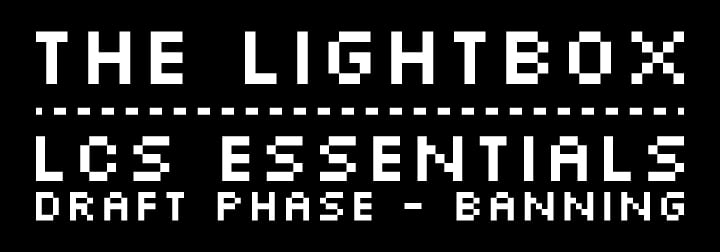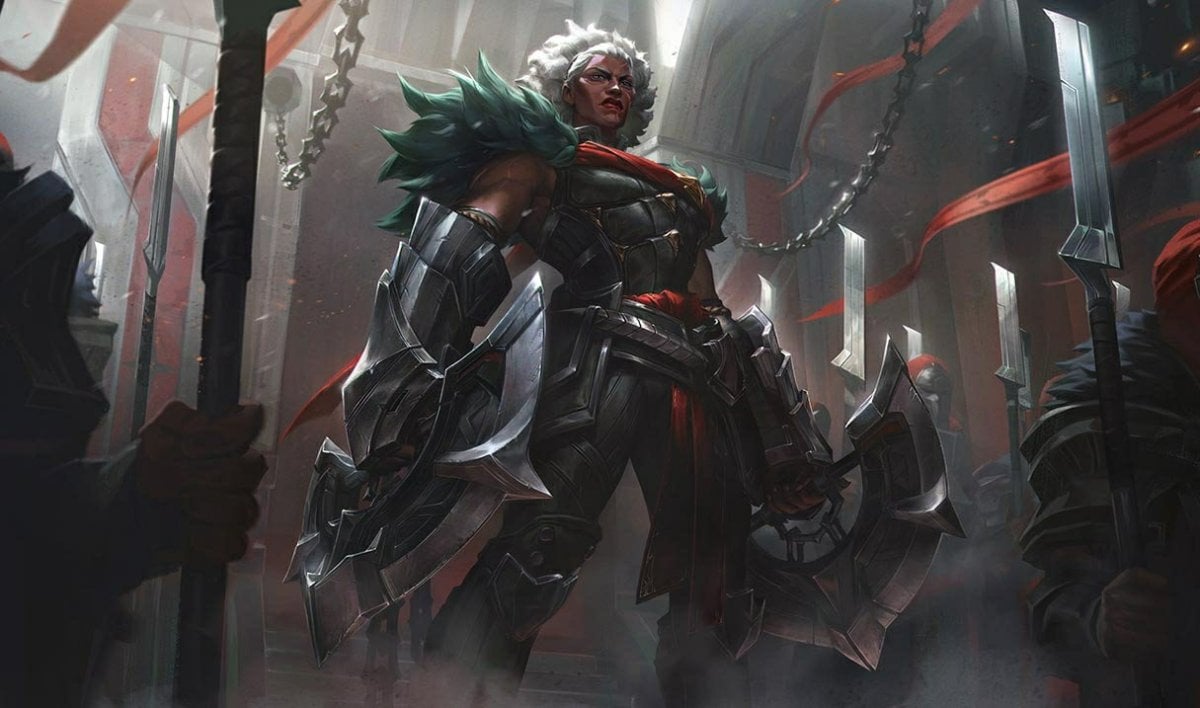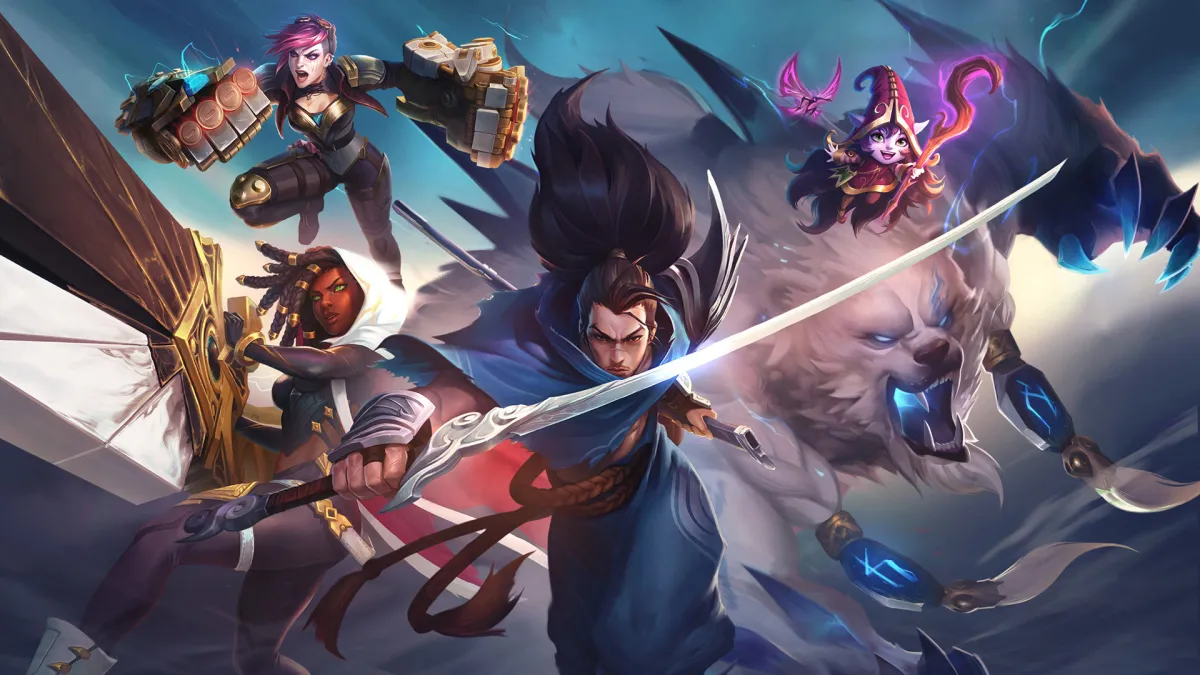
Hello, I go by The Lightbox and was wondering if you had time to talk about our Lord and Savior, League of Legends, today? I am a member of the Esports Coaching Network, a content creator, a player, and last, but certainly not least, a LoL Twitter Analyst. Today, I would like to begin a conversation about competitive draft phases. The process of banning champions, picking a composition, and the mind games that lie within those decisions, seems to be something that is misunderstood amongst the community. This is understandable given the small amount of content that covers the intricacies of drafting in a competitive atmosphere, up until recently. That is why I am here; better late than never, right? For me, draft phase is one of the most interesting facets of competitive League of Legends. It overtly demonstrates which team has the best understanding of the game, can adapt on the fly, and is most confident in their play. Over the coming articles, I will discuss and illustrate exactly what goes into each aspect of draft phase and how they apply to various compositions. Let’s begin…
B& & V&
To start off, we’ll analyze the first aspect of drafting. This portion of draft phase can be broken into three major categories; banning OPs, targeted bans, and style bans. The first two forms of denying champions are fairly common knowledge and seen regularly, but very few may understand exactly what I mean by “style bans”, because they are the least common type of pick denial; but don’t worry, Daddy is here to help. Once we understand these, we will continue to a fourth category that covers the option of what I will call “The Anti-Ban”, because it is the first thing that came to mind and I haven’t had coffee yet. This section will cover the mind games that can be played and the potential consequences of not banning obvious options in particular scenarios. From there, the article will have a conclusion and end, #SPOILERS.
OPs…No, Not That, The Other Definition For OP…
The most common means of denial is banning strong champions on the current patch; some notable examples of this are Kassadin in Season 4, Azir/Kalista in Season 5, and Morde/Gangplank at 2015 Worlds tournament. The big trend to notice in these examples are how often these bans are new or reworked champions. Out of the 13 champions that had gameplay revisions in the 2015 season, only 3 were left out of competitive play, not seeing mass bans or picks. Out of the 3 champions that were released during the 2015 season, only 1 saw very little professional activity, while the other 2 had their spree of being a must-pick/ban. If Riot has mastered any aspect of character development, it’s the ignorance of champion strength. To be fair, this makes the champion incredibly popular and player’s abuse their strength for that sweet and sexy ELO, but it creates an aspect of ban phase that is incredibly annoying, especially for Red side.
The ban phase for Red side is something that has come into a lot of criticism recently and it directly ties into the concept of banning OPs. Let’s take a look at Worlds 2015, where Mordekaiser and Gangplank were must ban champions. These 2 champions are bans that Blue side can easily force, just by the inherent advantage of Blue side. Look at the diagram below:

These are the bans for the final game between KOO and SKT, at Worlds 2015, in the Grand Final’s match. See how KOO is able to ban whatever they want, while SKT is forced to ban GP and Morde as their final two? That is because KOO is able to force that with their first picks. Let’s say the bans started out like this:

At this point, KOO has the option of banning Mordekaiser/Gangplank or continuing on with their draft. If they decide to ban one of them, SKT would have successfully forced a particular ban from KOO, freeing up a pick they potentially wanted, while getting another priority ban for them, and allowing them to ban the last OP champion.

This may seem like a win for SKT, but there is an alternative outcome that can be decided by KOO in this situation. What if KOO doesn’t pick GP/Mordekaiser as their last ban? This leaves SKT in a situation where they can’t ban either champion and are forced to let KOO pick which of the top tier champions they would rather play. SKT does get to pick the other and potentially get another top tier champion as well, but it allows KOO to take the comfortable situation of picking the stronger of those two OP champions; i.e. KOO get Mordekaiser, while SKT get Gangplank and Rek’sai, but Mordekaiser is able to single handedly carry the game to a victory. This is somewhat of an extreme example, given Worlds was played on an untested patch with huge changes to the game, but it is a good illustration of how OP bans effect each side of the map.
This can also be applied to scenarios where only one champion is broken in the current state of the game. For example, let’s pretend there is a Volibear rework that makes him completely broken and lands him a 100% winrate in competitive play and zero counters. Blue side has the option of completely ignoring that champion during bans, since they have first pick. This forces Red side to expend one of their bans on Volibear, to deny him from the enemy team. See how this can be a huge pain to deal with?
With that said, what happens when there aren’t broken champions that easily win games? This is where the line between banning OPs and the other two means of denial begins to blur. For the sake of keeping each section distinctly different, we’ll address the mid-ground amongst these later and continue onto the next section.
The “Kick Me” Sign of Draft Phase
Target banning is pretty straightforward and is riddled with famous examples; Faker’s LeBlanc, Freeze’s Draven, Westdoor’s Fizz, the list goes on. The great thing about this form of denial is how versatile it can be. Every player has at least one champion they are really good at and can be punished for via bans. A prime example was Fenix, on Team Liquid, during the 2015 Summer Split. When he was allowed on Azir, things like this happened (if you tuned into Allstars, you’ve already seen this a million times, so feel free to ignore):
However, when Fenix was forced onto other champions, he took a more passive approach to the game and wasn’t able to protect some of his poor positioning, like what got him into said example above. Opponents were able to easily punish this and force Fenix into more supportive roles for his team, although not a lot of teams actually banned Azir from him, but whatever I’m not upset about it or anything, let’s just continue on, please, thanks…
Team Liquid was an organization that had a lot of potential carries last season and had people to pick up the slack in situations like the previously mentioned, but what happens when you only have one major threat on the team? Let’s use TSM’s Worlds experience as an example. Bjergsen was consistently the highest level DPS by miles (on TSM) and the rest of the team played extremely passive, not only at Worlds, but throughout the Summer Split as well. Knowing this, it would make sense to target ban Bjerg, right? Here are a couple of the ban phases against TSM during the Group Stage:

See a trend? In two separate games, teams banned three potential mid laners against Bjerg, forcing him onto his “second tier” champions. Not only did this inhibit the strategic possibilities of TSM, seeing as how they are forced to play around Bjerg, but it also severely lessened their potential damage. This is especially effective when your mid laner is at a disadvantage in lane, either through being outclassed or forced to pick a certain champion for a particular composition. With three target bans on a dominate laner, their opposition is allowed an edge in lane; i.e. banning three mid-lane assassins, so your AP Kog’maw doesn’t get picked off every five seconds.
Target bans can also be used to prevent particular compositions that an enemy team tends to run. This goes pretty hand-in-hand with target banning a player’s champion, but can also be paired with other picks that inhibit that style of play; such as the Lulu bans against CLG in their last four games at Worlds, preventing potential “protect the ADC” comps during teamfights. These four games were also all their losses of the six games they played; the best of NA brought to their knees by a Lulu ban. RIP. #Kappa
However, despite all of the advantages that come from target banning, there are consequences. Tunneling on a player’s favorite or best champion and forcing its denial leaves you open for other strong picks that are equally devastating. We saw this many times at Worlds, where Red side opted out of a Mordekaiser or Gangplank ban for a targeted pick, allowing Blue side to acquire the unbanned OP and win. Understanding what the enemy team’s best champions are and crafting specific counter play for those scenarios is the most important aspect when considering the value and implementation of target bans.
SWAG SWAG SWAG SWAG SWAG
As expressed earlier, there are very few examples of style bans, but there ARE some; the most notable being Team Impulse from the Summer 2015 split. Almost every ban TIP made throughout Summer were champions that countered their style via kiting, zoning, or disengaging during fights; Kalista, Azir, Ryze, Rek’sai, Ahri, Twisted Fate, Braum, Alistar, anything that wouldn’t allow them to be aggressive. The big thing to note about this means of denial is how the use of OP and target bans are also huge components. Kalista/Azir/Alistar/Rek’sai were all highly contested picks throughout the split, Ryze became unstoppable after his rework, and Ahri/Twisted Fate/Braum were picks for specific comps and players. Sure, this may seem like typical ban phases and maybe just a coincidence in the grand scheme of things, but when you look at all their bans throughout the split, there is undeniably a trend:

Not only does this trend towards denying counters of their style, but also allows for more flexibility in the Impulse composition, since they no longer have to worry about certain mechanics or methods of play. The glaring weakness of this strategy, why it isn’t commonly used, and the reason why TIP failed to make top three last season, is the amount of counter play it had from stronger opponents. Teams that had a broader understanding of the game and deeper champion pools could easily punish them, like Team Liquid, Counter Logic Gaming, and Cloud 9 did during the NA LCS Summer Finals.
“The Anti-Ban” /eyeroll
Now that we know what, when, and how to ban, what about not banning? What if we decided to leave an obviously strong champion up and opt into denying something else instead? What if we DO have a counter to a player’s undefeated champion? This is where the mind games of banning really come into play. Some of you may have caught the reference in the third sentence, but if you didn’t, let’s take a look at the very last game of the 2015 Mid-Season Invitational. It is game five, in a best of five, between SK Telecom and EDward Gaming, in the grand finals, and EDG DOES NOT ban Faker’s undefeated LeBlanc. We’ll cover the intricacies of the champion picks in the next article, but EDG let’s SKT pick LeBlenc, because they had a mid-lane Morgana counter in PawN’s back pocket. Using the mind games of banning or not banning specific champions, in order to force your opponent’s hand, can be incredibly advantageous for your team, not only because you have a plan for their reaction, but it also allows you to potentially deny another champion from their roster. This kind of psychological outplay can cause a mental block on the opponent and prevent them from quickly adapting, such as TSM being tilted all split due to a single Cassiopia pick #KappaAgain. However, this has obvious and huge potential consequences. Your opponents might be more comfortable playing against your counter than you expect or their undefeated champion might be undefeated for a VERY GOOD REASON. These types of mind games are incredibly risky, but CAN work with enough preparation and in particular environments.
Ban At Your Heart’s Content!
There we have it! That’s most of what you need to know when either planning your draft phase or watching the pros. Keep in mind that there are infinite possibilities and limitations, not only when considering bans, but also when approaching the entire draft phase. Keep your wits about you, learn your champions, and constantly brainstorm for new ways to approach the game. While you do that, I’m going to pet my cats and work on the next section. See you nerds next time!
-Robert Bennett AKA The Lightbox
http://www.twitch.tv/thelightbox
https://twitter.com/TheLightboxEnt
http://thelightboxent.tumblr.com/
https://instagram.com/thelightboxent/
https://www.facebook.com/TheLightboxEntertainment
https://www.youtube.com/user/TheLightboxEnt






Published: Dec 21, 2015 03:14 pm